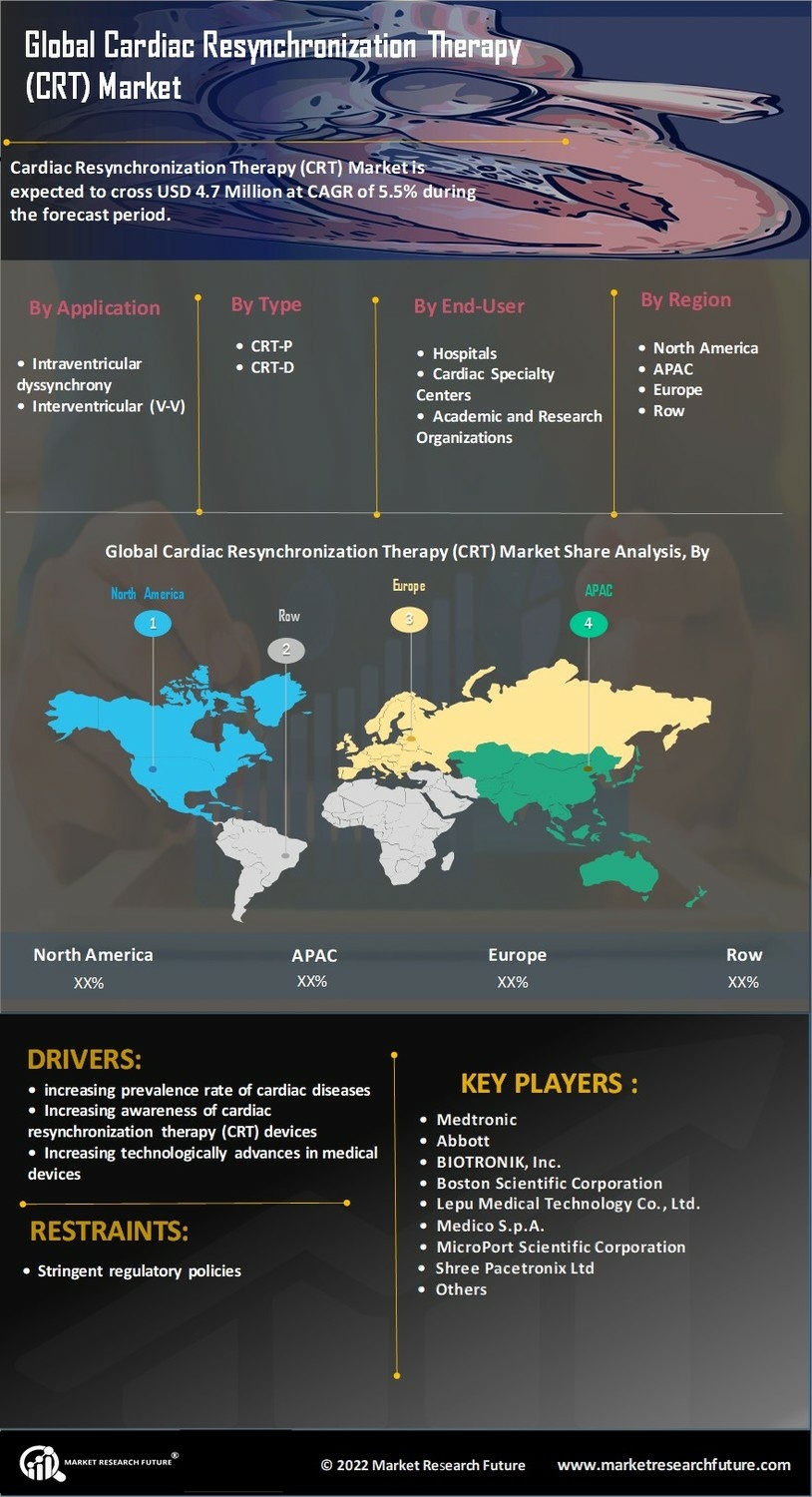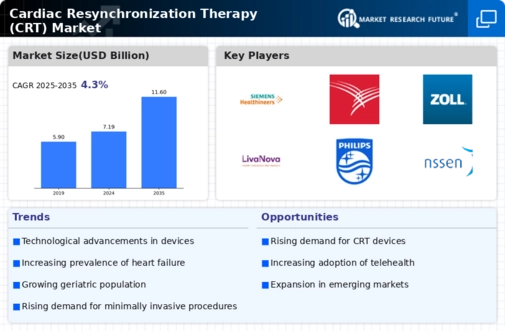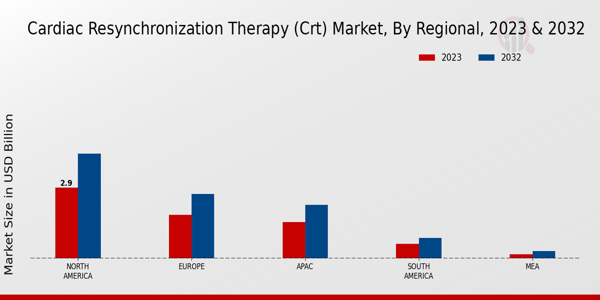Market Growth Projections
Growing Geriatric Population
The expanding geriatric population is a significant factor driving the Global Cardiac Resynchronization Therapy (CRT) Market Industry. Older adults are at a higher risk for heart failure and related conditions, necessitating effective treatment solutions like CRT. As the global population ages, the demand for CRT is expected to rise correspondingly. This demographic shift is projected to contribute to the market's growth trajectory, with estimates indicating a market value of 7.19 USD Billion in 2024. The increasing prevalence of heart conditions among the elderly underscores the importance of CRT in managing their health.
Rising Awareness and Education
There is a notable increase in awareness and education regarding heart diseases and available treatments, which is driving the Global Cardiac Resynchronization Therapy (CRT) Market Industry. Healthcare campaigns and initiatives aimed at educating both patients and healthcare professionals about the benefits of CRT have led to higher diagnosis rates and treatment adoption. This heightened awareness is crucial, as it encourages patients to seek timely medical intervention. Consequently, the market is poised for growth, with projections indicating a market size of 11.6 USD Billion by 2035, reflecting the positive impact of educational efforts on treatment uptake.
Supportive Regulatory Framework
A supportive regulatory environment is fostering growth in the Global Cardiac Resynchronization Therapy (CRT) Market Industry. Regulatory bodies are increasingly recognizing the importance of CRT in managing heart failure, leading to streamlined approval processes for new devices and therapies. This regulatory support not only encourages innovation but also enhances market entry for new players, thereby increasing competition and improving patient access to advanced CRT options. As a result, the market is likely to experience robust growth, driven by the introduction of novel therapies that align with regulatory standards.
Increasing Prevalence of Heart Failure
The rising incidence of heart failure globally is a primary driver for the Global Cardiac Resynchronization Therapy (CRT) Market Industry. Heart failure affects millions, with estimates suggesting that approximately 26 million people worldwide suffer from this condition. As the population ages and lifestyle-related diseases become more prevalent, the demand for effective treatment options like CRT is likely to increase. This growing patient population is expected to propel the market, contributing to a projected market value of 7.19 USD Billion in 2024, with further growth anticipated as awareness and diagnosis improve.
Technological Advancements in CRT Devices
Technological innovations in cardiac devices are significantly influencing the Global Cardiac Resynchronization Therapy (CRT) Market Industry. Recent advancements include the development of more sophisticated devices that offer enhanced monitoring capabilities and improved patient outcomes. For instance, devices equipped with remote monitoring features allow healthcare providers to track patient progress in real-time, leading to timely interventions. These innovations not only improve the efficacy of CRT but also increase patient adherence to therapy. As a result, the market is expected to grow, with a compound annual growth rate (CAGR) of 4.42% projected from 2025 to 2035.
























